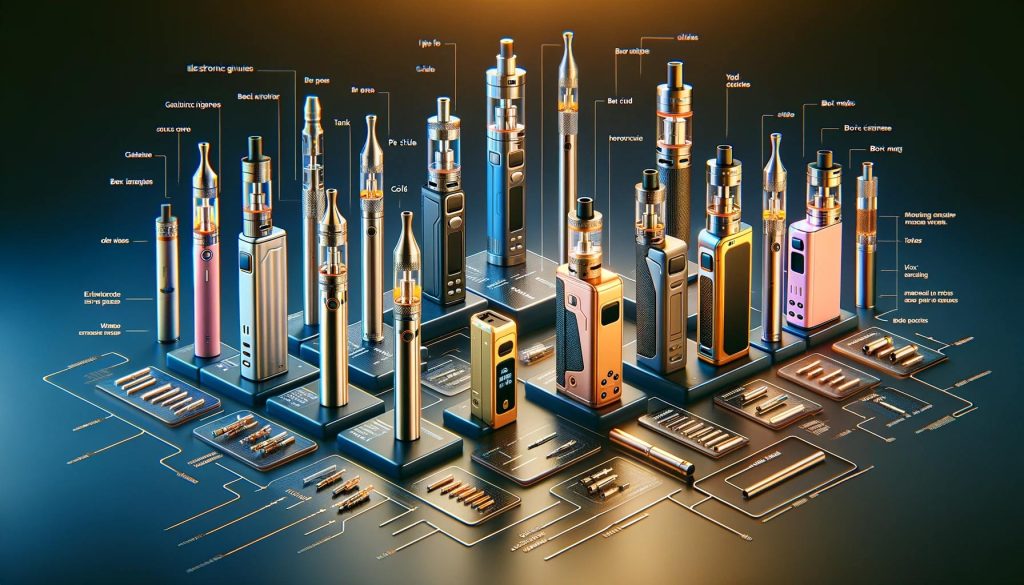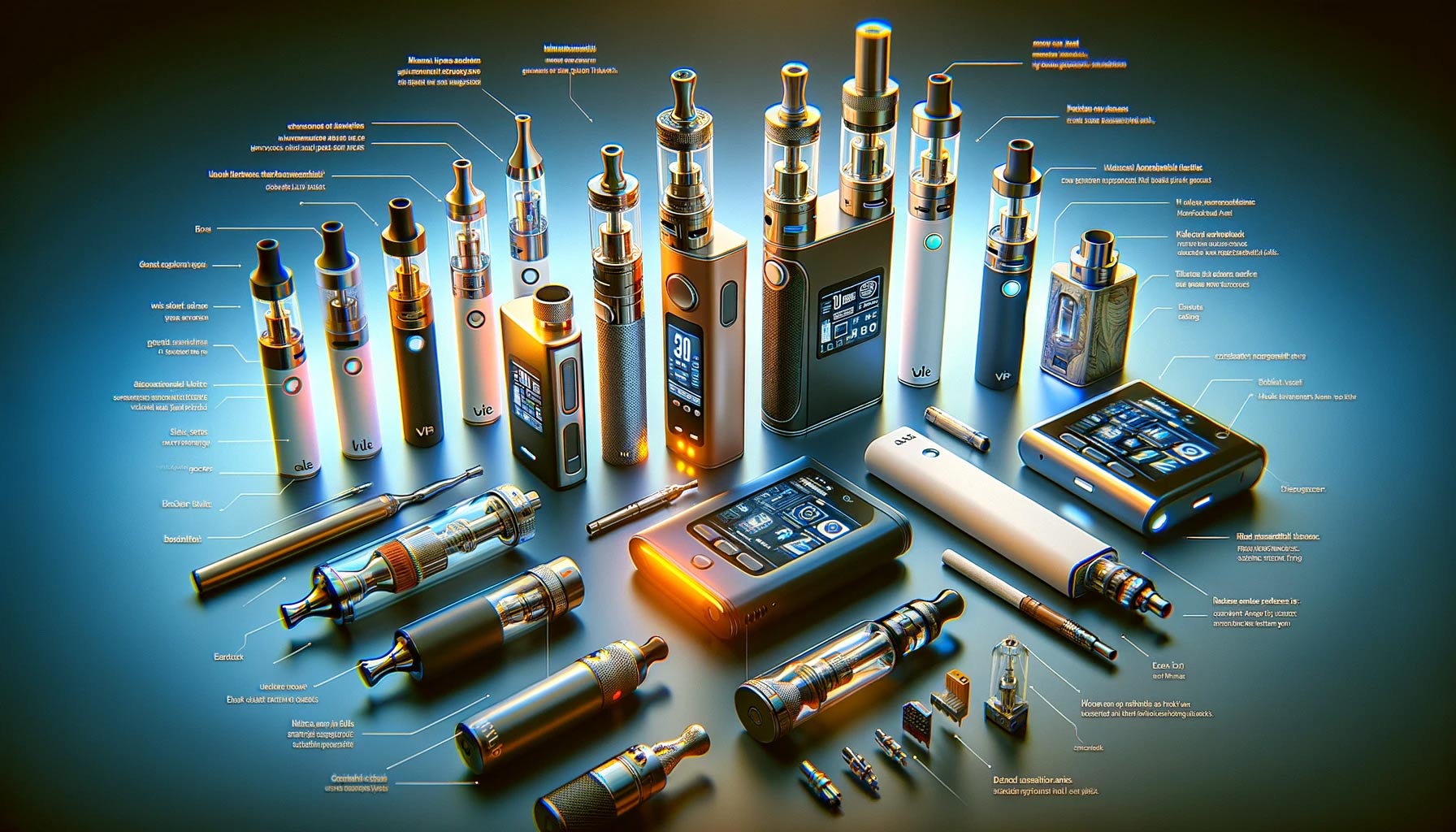Introduction to Electronic Cigarettes
Electronic cigarettes, or e-cigarettes, have revolutionized the way people smoke. Since their inception in the early 2000s, e-cigarettes have evolved from niche gadgets to mainstream products used by millions worldwide. They offer a smokeless alternative to traditional tobacco smoking by heating a liquid to generate an aerosol, commonly referred to as vapor.
Trends and Innovations:
- Pod systems: Compact, refillable devices with pre-filled e-liquid pods.
- Disposable vapes: Single-use devices pre-filled with e-liquid and battery.
- Mesh coils: Provide more even heating and flavor production.
Health and Safety:
- Potential benefits: Reduced harm compared to smoking, potential aid in smoking cessation.
- Potential risks: EVALI (lung injury), nicotine addiction, exposure to harmful chemicals.
Regulation and Legal Landscape:
- Age restrictions, sales regulations, and taxation policies vary by country.
- Recent legal developments impacting the industry include flavor bans.
Vaping for Beginners:
- Types of devices: Vape pens, mods, pod systems, disposables.
- Choosing e-liquids: Nicotine strength, flavor, VG/PG ratio.
- Safe vaping practices: Battery safety, avoiding counterfeit products.
User Experience and Resources:
- Vaping community: Online forums, social media groups.
- Quitting vaping: Resources, support groups.
Understanding the Technology Behind E-Cigs
E-cigarettes are composed of a battery, an atomizer, and a cartridge filled with e-liquid. The battery powers the atomizer, which heats the e-liquid, turning it into vapor that the user inhales. Unlike traditional cigarettes, e-cigarettes don’t involve combustion, and this fundamental difference has contributed to their popularity among those looking for an alternative to smoking.

The Rise of Vaping: Statistics and Trends
Global estimates show a 280.3% increase in vaping rates from 2012 to 2022, with users growing from 21.3 million to 81 million. If trends continue, a 6.3% increase is expected in just one year. In the United States, over 2.5 million middle and high school students reported using e-cigarettes in 2022, highlighting the prevalence among the youth.
Health Implications: The Good, The Bad, and The Science
Research increasingly reveals health risks associated with e-cigarette use, particularly concerning their impact on the heart and lungs. Ingredients such as nicotine and flavoring agents may pose independent health risks. Notably, the clinical diagnosis of “E-cigarette, or Vaping, product use Associated Lung Injury” (EVALI) was recognized in 2019 after a series of hospitalizations. Long-term studies are needed to fully understand the implications of vaping, especially since current research often involves individuals who have also smoked traditional cigarettes.
E-Cigarettes Regulations and Legal Landscape
The regulatory environment for e-cigarettes is complex and varies significantly by jurisdiction. In the United States, regulations encompass aspects like product packaging, youth access, licensure, and smoke-free air legislation, and these are updated quarterly by the Public Health Law Center4.
Flavors and Nicotine Levels: A Deep Dive
A significant aspect of vaping’s appeal is the vast array of flavors and nicotine levels available, which can affect user experience and satisfaction. Nearly 3 out of 4 young users report using flavored e-cigarette products3. This variety allows users to customize their vaping experience, from nicotine-free options to high-strength formulas.
The Cost of Vaping vs. Smoking
Vaping is generally less costly than smoking, with the median monthly expenditure on vaping products ranging between $50-$75. In contrast, the average smoker spends significantly more on traditional tobacco products5. This cost-efficiency, combined with perceived health benefits, has contributed to the industry’s growth.
Vaping Culture and Community
Vaping has spawned its own culture, with online communities, forums, and even brick-and-mortar vape shops where enthusiasts can share tips, tricks, and customize their devices. These social structures have helped to establish vaping not only as a smoking cessation aid but also as a hobby and a lifestyle for many.
Making an Informed Choice: Should You Vape?
In considering whether to vape, individuals should weigh the potential risks and benefits. While some view vaping as a less harmful alternative to smoking, the long-term health effects are still not fully understood. It’s essential for potential users to make an informed choice based on the latest evidence and personal health considerations.
Conclusion and Future Outlook
As we’ve navigated the vapor of e-cigarettes, it’s clear that they’ve become a significant part of modern culture, with implications for health, economy, and law. The market continues to grow, with the global e-cigarette and vape market size reaching approximately $24.6 billion in 2023, and expected to continue growing67. Future outlooks suggest a need for ongoing research into health impacts, continued evolution of regulations, and monitoring of market trends to understand the full scope of e-cigarettes’ place in society.
FAQ
Are electronic cigarettes safer than traditional cigarettes?
While e-cigarettes are generally considered less harmful than traditional cigarettes because they don’t produce tar or carbon monoxide, they are not without health risks. The long-term health effects of e-cigarettes are still being studied, but they are known to contain potentially harmful substances, including nicotine and other chemicals.
Can e-cigarettes help me quit smoking?
Many people have used e-cigarettes as a tool to help quit smoking. However, it’s important to note that e-cigarettes are not FDA-approved quit aids, and their effectiveness varies from person to person. If you’re looking to quit smoking, consult a healthcare provider for the best cessation methods.
What regulations apply to e-cigarette use?
Regulations vary by region but may include age restrictions, marketing limitations, and bans on use in certain public places. In the United States, for instance, the FDA regulates e-cigarettes, and states have their own sets of regulations which are updated periodically1.
How much does vaping cost compared to smoking?
Vaping is generally less expensive than traditional smoking. The average monthly cost for vaping products ranges from $50 to $75, which can be lower than the cost of smoking cigarettes, especially in regions with high tobacco taxation2.
Is secondhand vapor from e-cigarettes harmful?
There is ongoing research about the effects of secondhand vapor. While it’s generally believed to be less harmful than secondhand smoke from traditional cigarettes, e-cigarette vapor can still contain nicotine and other chemicals that may pose health risks.
What is the prevalence of e-cigarette use among youth?
E-cigarette use has been particularly high among youth. In 2022, 2.55 million U.S. middle and high school students reported current e-cigarette use. This high prevalence is concerning due to the potential health risks and the possibility of leading to future smoking habits3.
What are the most popular flavors among e-cigarette users?
The popularity of flavors varies, but many young users report a preference for flavored e-cigarette products. Flavors play a significant role in the appeal of e-cigarettes, particularly for the youth demographic.
What is EVALI?
EVALI stands for “E-cigarette, or Vaping, product use Associated Lung Injury.” It is a condition recognized by health authorities that has been associated with the use of e-cigarettes and vaping products. The outbreak of EVALI cases in 2019 highlighted the potential risks of vaping, particularly with certain types of e-liquid ingredients.
How is the e-cigarette market expected to grow?
The global e-cigarette and vape market size was valued at USD 22.45 billion in 2022 and is projected to grow at a compound annual growth rate (CAGR) of 30.6% from 2023 to 2030. The market is expanding rapidly due to a growing perception of being a safer alternative to traditional cigarettes.


1 Comment